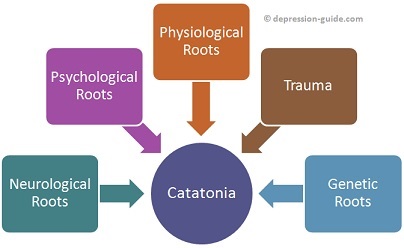Catatonia in Aspergers Syndrome
TweetCatatonia is the name given to the disorder where a person cannot walk in the normal way and have some typical dagger, swagger in the walk. It is a psychomotor disorder, which is present as a symptom in many neurological disorders. The person’s ability to walk and move normally is impaired and he experience other symptoms as well.
The most common symptom of Catatonia is stupor. This signifies the state in which, when, although the person is given a stimulus, he cannot move, raise alarm and respond. There are other side of the disorder sufferer also who have excessive and voilent movements rather than slow movements.
What is Catatonia or Catatonic Disability?
The Catatonia disability is associate with motor or muscular movement related disturbances in the body. It may be from psychological or physiological root. The people who are having this disorder can be in same body position for long duration - sometimes in days, weeks or even months in some cases. They seem a lot of times quite agitated and purposeless. Most of the body actions and movements are not related to the environment they are in.
Catatonia is a very broad term in itself comprising of many behavioural features such as absence of speech, movement and maintaining postures. The lesser abnormalities in standing, walking, speech, behaviour also are part of this cluster of illnesses. Asperger Syndome or Autistic spectrum disorders patients have some characteristic presence of Catatonic symptoms.

Statistics on Catatonia
Among all the psychiatric patients, about 5% and 10% of patients show some sort of Catatonic symptoms. In these patients about 25%–50% are present with mood related disorders. About 15% is present in schizophrenia. It is present in some psysiological and neurological conditions as well.
Relation of Catatonia and Asperger Syndrome
Over the last 15-20 years the presence of Catatonia is visualized in the adults and adolescents suffering from Autistic Spectrum Disorders or Asperger Syndrome. Although the occurance is said to be low, but the trend is on growth track. There are many instances of people who are Autistic (Asperger as well) and show signs of Catatonic behaviour.
For the people with Asperger Syndrome, catatonia can be present in the following form:
- People have problems in starting, completing and stopping some or all body actions
- Lack of motivation is present
- They are completely passive at some times.
- Very slow in their movements and behaviour. The motor skills seems to be impacted, but not typically as severe as in Catatonia.
- Presence of repetitive and ritualistic behaviour.


Sometimes crying or laughing
are the only options left,
and laughing feels better right now.

Current Issue
 Self Help Leaflets Take the help of our self help leaflets or booklets. |
 The DG Magazine All about living with depression |
Asperger's Syndrome
- About Aspergers Syndrome
- Adult Asperger Syndrome
- Asperger Characteristics
- Asperger Syndrome Behavior
- Asperger Syndrome Cause
- Asperger Syndrome Describing Disorder to Parent
- Asperger Syndrome Details
- Asperger Syndrome Medication
- Asperger Syndrome Therapies
- Aspergers Attention Problems
- Aspergers and Classroom Accomodations
- Aspergers and Middle School
- Books on Children with Asperger Syndrome
- Coping Method for Teens with Asperger Syndrome
- Gym Class and Asperger
- Is Asperger Syndrome a Learning Disability
- Martial Arts Therapy for Aspergers
- Mixed State Bipolar Aspergers
- Online Test Asperger Syndrome
- Non-Verbal Learning Disorder
- Students with Asperger Syndrome
- High Functioning Autism and Asperger Syndrome
- Catatonia and Asperger Syndome
- Motor Clumsiness
- Hans Asperger
- Parenting a child with Autism
- Treatment
- History
- Diagnosis












